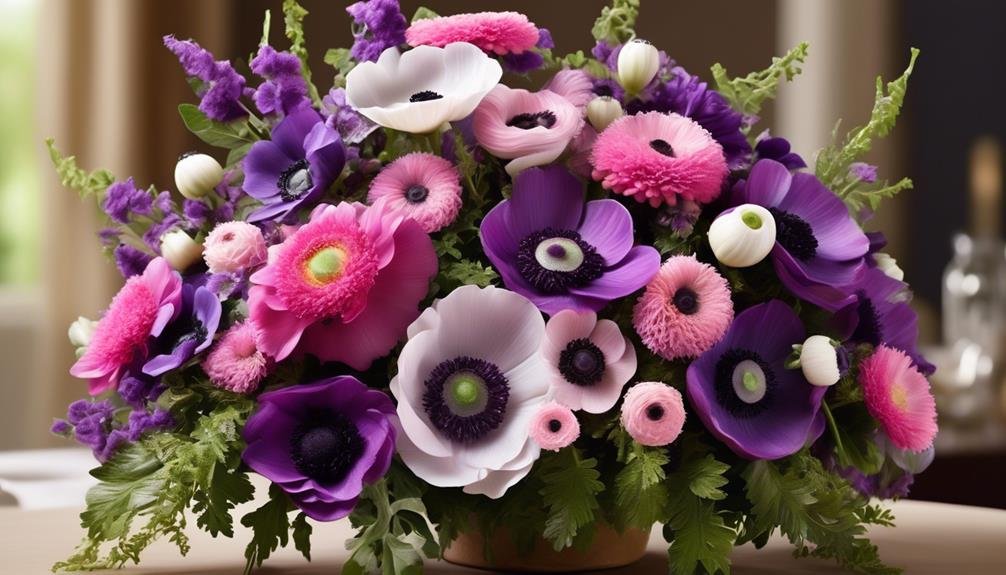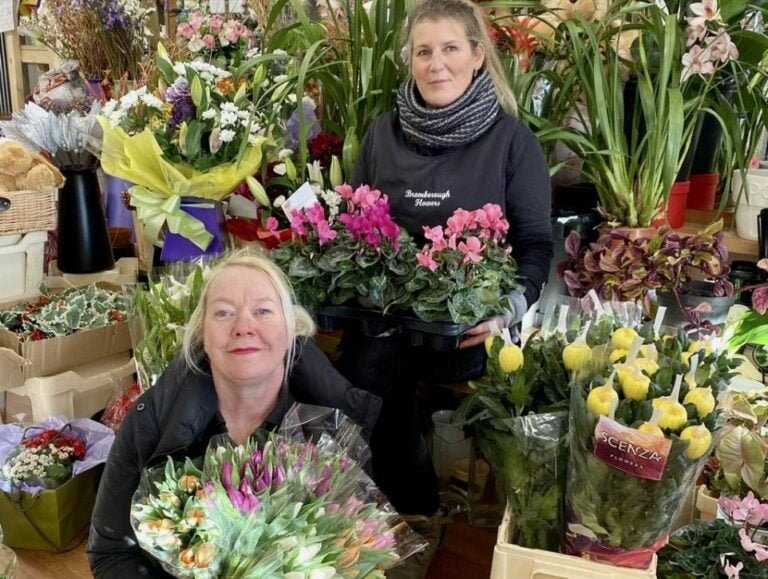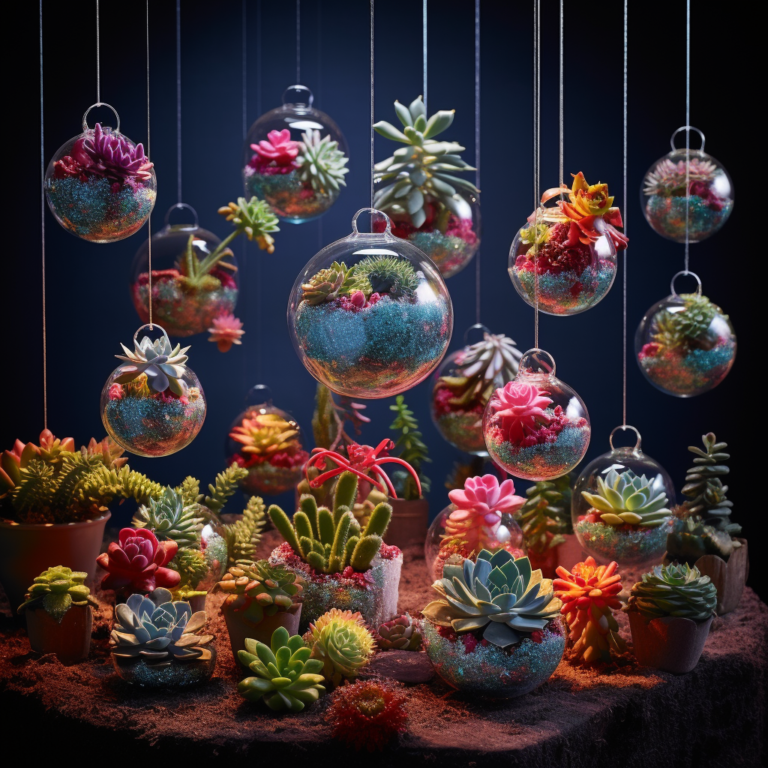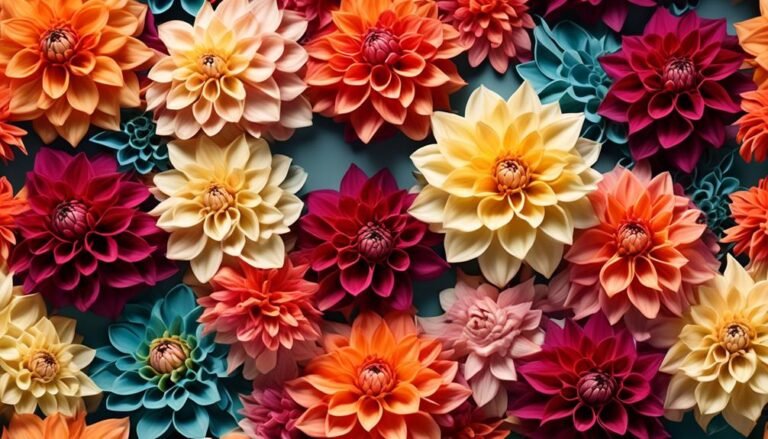Popular Types of Florist Flowers – Anemone
Anemone flowers, also known as windflowers, are not only visually captivating but also rich in history and meaning. These popular florist flowers come in a variety of colours and have interesting characteristics that make them a favourite choice for many. Let’s dive into the fascinating world of anemones and uncover some key facts about these enchanting blooms.
Introduction to Anemone Flowers
Anemone flowers, scientifically known as Anemone coronaria, are known for their delicate and vibrant petals. They are often associated with anticipation and excitement, making them a popular choice for special occasions such as weddings and celebrations. Anemones are also commonly used to symbolize protection and love, adding a deeper layer of meaning to their beauty.
Physical Characteristics and Colors
These flowers have a unique structure with a prominent dark center, surrounded by colorful petals that can range from white and pink to deep red and purple. Their striking appearance and elegant form make them a versatile choice for floral arrangements, adding a touch of sophistication and charm to any setting.
Seasonal Availability and Care Tips
Anemone flowers are typically available from late winter to early summer, making them a great choice for springtime events and decorations. When caring for anemones, it’s important to keep them in a cool environment and change the water regularly to ensure their longevity. Trimming the stems at an angle and removing any leaves that may be submerged in water can also help prolong the life of these exquisite blooms.
In conclusion, anemone flowers are not only visually stunning but also carry a rich symbolism that adds depth to their allure. With their wide range of colors and graceful appearance, they are a popular choice for florists and flower enthusiasts alike. Understanding their seasonal availability and care tips can help you fully appreciate and enjoy these captivating flowers in all their splendor.
Scientific Name
The Anemone flower, also known as windflower, belongs to the genus Anemone within the Ranunculaceae family. This genus encompasses over 120 different species, each with its own scientific name. For example, the De Caen Anemone is scientifically named Anemone coronaria [De Caen Group]. Varieties such as Mr. Fokker and Hollandia, which are hybrids of Anemone coronaria de Caen, have their own distinct scientific names: Anemone coronaria de Caen Mr. Fokker and Anemone coronaria de Caen Hollandia, respectively.
Understanding the scientific names of Anemone flowers is crucial for accurate identification and categorization within the diverse genus of Anemone. It also provides insight into the lineage and characteristics of each specific variety. This knowledge is essential for botanists, horticulturists, and florists to communicate effectively and understand the unique traits of different Anemone species and varieties.
Background History
The historical narrative of Anemone flowers is a fascinating tale of cultural significance and symbolism in art. Anemones have deep roots in human culture and botanical exploration, often overlooked in historical documentation.
Cultural Significance of Anemone Flowers
Christianity: Anemones are linked to the story of the crucifixion of Jesus Christ. Legend has it that these flowers sprang up from the tears of Eve as she mourned the death of Abel, making them a symbol of sorrow and forsaken love.
European Folklore: In certain European folklore, anemones are associated with magical and protective properties. They were believed to ward off evil spirits and bring good luck to those who wore them.
Symbolism in Art: Anemones have inspired countless artists and have been featured in famous paintings, symbolizing various emotions and themes. Their vibrant colors and delicate petals have made them a popular subject in still life and floral art.
Anemone flowers haven’t only played a crucial role in cultural symbolism but have also been significant in the world of art, adding depth and meaning to many masterpieces.
Physical Description
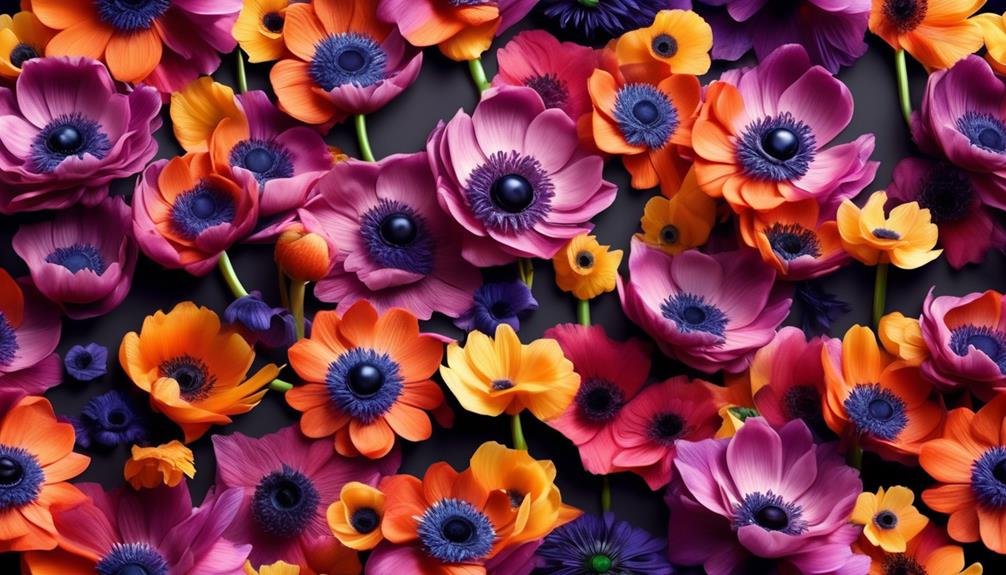
Anemones, also known as windflowers, are part of the Ranunculaceae family and are known for their star-shaped petals and vibrant colors like white, red, pink, and purple. They bloom in spring and autumn, and there are various cultivars, some of which are native to the Mediterranean region.
Anemones hold different cultural meanings, symbolizing protection and relaxation in some cultures, while in others they represent anticipation and excitement or even illness and forsaken love. In art and literature, anemones have been depicted as symbols of beauty, fragility, and fleeting joy, making them a popular subject for artists and writers.
Colours and Characteristics
Anemones are known for their wide spectrum of colors and delicate, dainty appearance, which gives them a unique and visually striking elegance. Let’s dive into the colors and characteristics of anemones:
- Color Varieties: Anemones come in a variety of colors, including white, red, pink, purple, and blue. This diverse range of hues offers flexibility in floral designs and arrangements, allowing for the creation of captivating and vibrant displays. The different colors of anemones provide a wide array of options for creating stunning floral compositions.
- Cultural Significance: Anemones hold significant symbolism in various cultures. They’re associated with meanings such as sincerity, protection from evil, and are often linked to themes of love and loss. Their rich cultural significance adds depth and emotion to floral arrangements, making them more than just visually appealing. Understanding the cultural significance of anemones can help in creating meaningful and symbolic floral designs.
- Floral Design Styles: Anemones are available in various sizes and shapes, from the compact and charming Japanese anemone to the showy and vibrant De Caen anemones. This diversity makes them suitable for a wide array of design styles and color palettes in floral arrangements. Their contrasting dark centers and delicate petals add an element of elegance and sophistication to any floral composition. The different types of anemones offer versatility in floral design, allowing for the creation of unique and visually appealing arrangements.
Understanding the symbolism and cultural significance of anemones can add depth and meaning to floral arrangements, while their diverse colors and characteristics offer endless possibilities for creating stunning and impactful designs.
Varieties Available
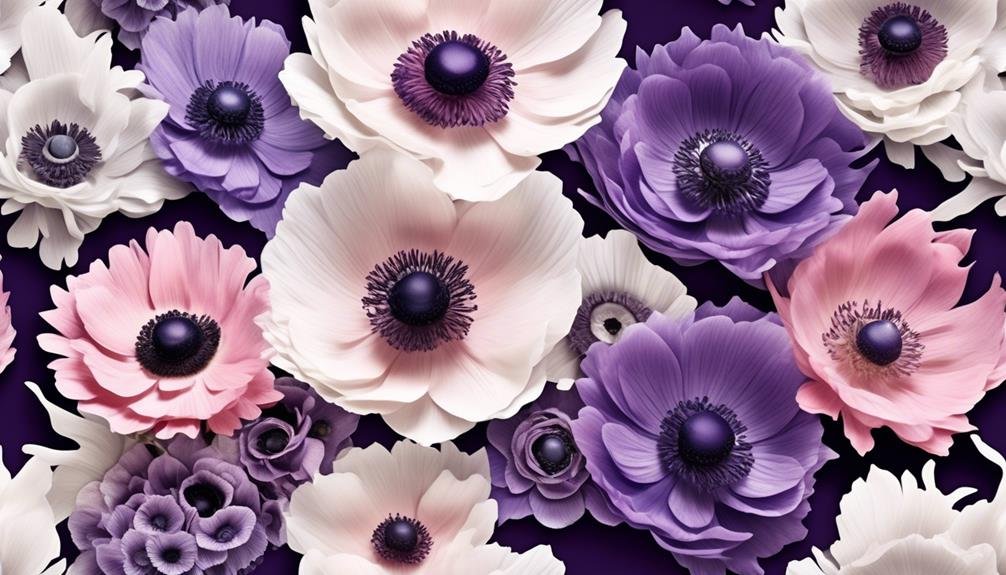
Anemones come in a wide variety of options, making them a versatile choice for floral arrangements. De Caen Anemones are vibrant and perfect for bedding displays, borders, and containers. They can be planted as annuals in cooler zones and are known for their vibrant hues.
Mr. Fokker Anemones, with their true azure blue flowers, thrive in full sun and are great for rock gardens and naturalistic plantings. Hollandia Anemones, featuring rich cherry blooms with a white eye and dark center, are popular for cut flower arrangements and add elegance to any garden. Bordeaux Anemones have deep, dramatic red blooms and are widely cultivated for their ornamental value.
The Bride Anemones, with their delicate and graceful appearance, are a popular choice for wedding bouquets and formal floral presentations. These anemones require well-drained soil and moderate watering, making them suitable for both professional florists and amateur gardeners.
Whether for ornamental gardening, cut flower production, or formal arrangements, anemone varieties offer a wide range of popular uses, contributing to their enduring popularity in the floral industry.
Seasonal Availability
Anemones are seasonal flowers that bloom primarily in spring, with some varieties also blooming in autumn. Their availability for floral arrangements and garden planting is tied to these blooming periods, making them accessible during specific times of the year. Different types of anemones have varying growing seasons, with some thriving in spring and others in late summer to fall. This seasonal availability is important for florists and gardeners to consider when planning their designs and landscapes.
Anemones also play a crucial role in local ecosystems by providing nectar and pollen for pollinators, supporting the health of bee populations and other beneficial insects. Their seasonal blooming periods contribute to the biodiversity and ecological balance in their natural habitats.
Understanding the seasonal availability of anemones is essential for making informed decisions about their use in floral arrangements and landscaping. Additionally, anemone symbolism and cultural significance vary across different cultures, adding to the intrigue and desirability of these beautiful flowers.
Care Tips
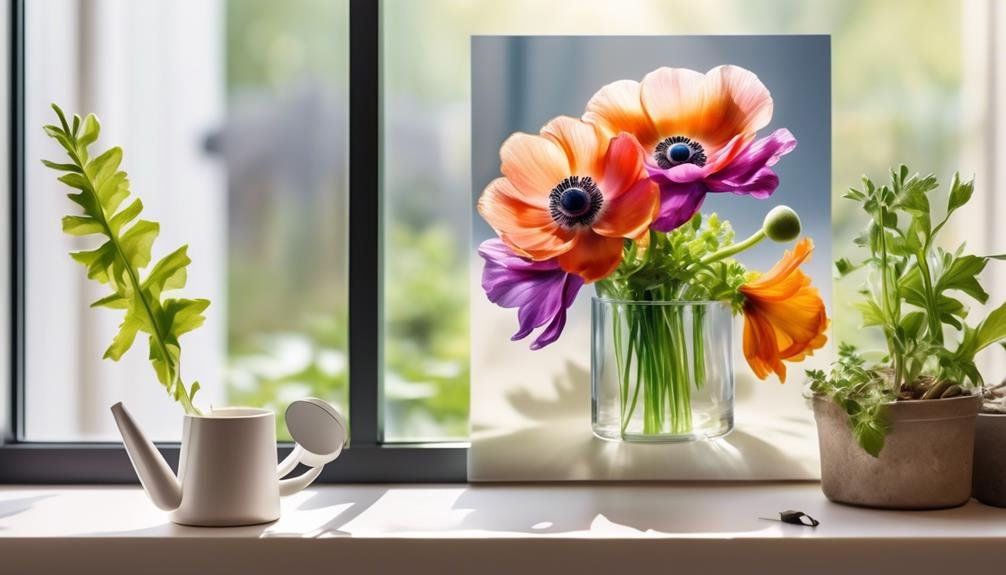
Anemones thrive in well-drained soil rich in organic matter and benefit from full sun to partial shade. They require moderate watering, ensuring the soil is consistently moist but not waterlogged. During the growing season, regular watering is essential, especially in dry weather, to support their growth and flowering. However, overwatering should be avoided to prevent root rot.
Anemones need a well-draining medium with good organic content to provide essential nutrients and promote healthy development. Incorporating compost into the soil can enhance fertility and structure, creating an optimal environment for anemones to thrive and bloom beautifully.
Are Asters Similar to Anemones and Suitable for the Same Floral Arrangements?
Yes, asters are similar to anemones and suitable for the same floral arrangements. As two types of florist flowers, they both have a delicate and striking appearance that adds beauty to any bouquet or centerpiece. Their compatibility makes them a popular choice for mixed floral arrangements.
Conclusion
Anemones are a top choice for florists, offering vibrant colors, easy maintenance, and a charming appeal. With various varieties blooming in different seasons, they provide a wide range of options for floral arrangements.
Their rich history, cultural symbolism, and presence in famous artworks further add to their allure. Anemones continue to be a beloved choice for both growers and consumers in the floral industry due to their enduring appeal and versatility.
